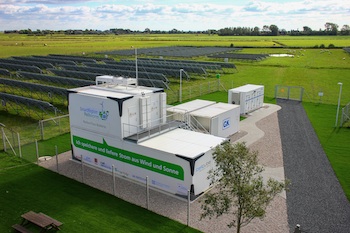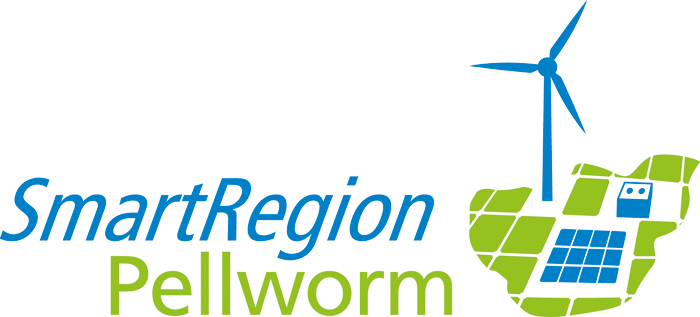Germany’s green energy island – Wadden Sea and Hallig Islands of Schleswig-Holstein biosphere reserve.
Pellworm is one of the North Frisian Islands located in the North Sea coast of Germany. It is a part of the Wadden Sea and Hallig Islands of Schleswig-Holstein biosphere reserve. The island has an area of 37 km2 and a population of about 1,600 inhabitants.
Pellworm is the greenest North Sea island, in both senses of the word, with its many dikes with many sheep, many meadows and fields, and many inhabitants who actively pursue environmental protection. Against this background, renewable energy has played an essential role in the local sustainable development.
Pellworm Island points the way to the energy supply system of the future. The project “SmartRegion Pellworm” brings a new dimension to the integrated use of renewable energy sources.
A pioneer island in the use of renewable energies
In 1997, a renewable energy plan for Pellworm was drawn up. The title was “Energy Supply on the Basis of Renewable Energy Sources Using the Example of the North Sea Island Pellworm – A Local Development Plan”. The goal of the development plan was to present model concepts for energy supply based on renewable energies and to access a broad spectrum of applications. Special emphasis was given to energy management and the ways of storing energy. Pellworm’s strategy for the future is based on fully exploiting its main sources of renewables: wind, sun and biomass.
SmartRegion Pellworm
The purpose of the SmartRegion Pellworm project is to address several challenges of the energy transformation at the same time. It aims to balance the intermittent output of renewables and to use more of this output locally. The nearly €10 million project is coordinated by E.ON Hanse AG and Schleswig-Holstein Netz AG. It is being conducted by a broad-based innovation alliance consisting of partners from industry and science: : Gustav Klein GmbH & Co. KG, (power electronics), Saft Batterien GmbH, West Coast University of Applied Sciences, Fraunhofer Insitute IOSB-AST and RWTH Aachen University. SmartRegion Pellworm received funding from several federal ministries as part of the Federal Energy Storage Initiative.
Innovative Storage Concept

© E.ON. Hybrid storage system combines a redox flow and a
lithium ion battery to provide high energy and high power.
Using a combination of innovative storage technologies, E.ON is looking to provide a stable, cost-efficient and market-oriented electricity supply based on renewable energies. On Pellworm, energy generation from photovoltaics (about 2.7 MW), wind power (5.7 MW) and biogas (around 530 kW) is on average three times higher than consumption. The pioneering energy storage system uses of a hybrid battery storage system comprising a redox-flow (200 kW, 1.600 kWh) and a lithium ion (1 MW, 560 kWh) battery to store renewable electricity centrally, electric storage heaters in homes for demand response and residential batteries for balancing distributed photovoltaic systems. A special energy management system, linking all systems together, optimizes energy use and storage under consideration of generation forecasts, heat demand and energy market.
As part of the SmartRegion Pellworm project, the island’s existing power infrastructure was supple-mented by a variety of components that make it possible to better control energy flows and to achieve an optimal balance between power output and usage. The integration of large-scale batteries into the regional power grid is one of the new approaches taken by the project. Another is the hybrid storage system concept, which combines two state-of-the-art battery technologies to provide high power and high energy with reduced investment costs: lithium ion and redox flow. Other key components of the island’s innovative power system include automated distribution substations, smart meters and grid communication infrastructure.
Lessons learned and replicability
Pellworm has now become a platform for testing and improving the local renewable energy storage system. The technology already deployed on Pellworm is a storage blueprint for a future decentralized energy system which could help to reduce the need for transporting large quantities of bulk power across Germany and Europe and, consequently, reduce the need for network expansion.


















